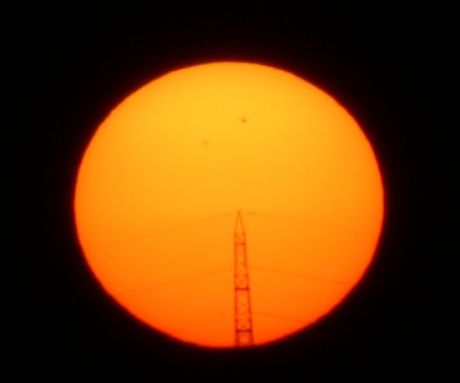Towards more accurate solar storm forecasts

Sun_Pylon
By Stefan Wernli (Own work) [CC BY-SA 2.5 (http://creativecommons.org/licenses/by-sa/2.5)], via Wikimedia Commons
Having reached the peak of its 11-year activity cycle, our planet's mother star has been acting up –and scientists are ready for it. By meticulously studying the Sun, they are able to understand better, and potentially predict, solar eruptions that spew huge amounts of dangerous energetic particles towards Earth.
Space weather is the term used to describe the interaction between
magnetic fields and particles ejected from the Sun and the Earth's
magnetic field. This is not only amps surging through our planet's
atmosphere. In the case of strong solar eruptions, the operations of
satellites and human personnel in orbit may be disrupted. Disruptions
may reach all the way to the ground in case of very intense solar
eruptions, affecting ground-based communication infrastructures and
power grids.
To minimise the impact of adverse space weather on modern technologies, a credible solar-activity forecasting infrastructure needs to be developed. But first, scientists need to understand fundamental physical processes driving space weather. The EU-funded project SOME-UFO (Solar magnetic eruptions: Understanding and forecasting) focused on the complex magnetic configurations of solar active regions, the primary hosts of solar eruptions.
Active regions appear as dark spots on the surface of the Sun. By scrutinizing data from multiple vantage points by aspects of theory, the SOME-UFO team determined changes in twisting magnetic fields in the days leading up to solar flares and how they change by these powerful blasts of energy. The scientists relied on several satellites and ground-based magnetographs to find long-sought clues toward a viable solar-eruption prediction.
One key factor that influences solar-flare triggering is the excess magnetic energy stored in twisted magnetic field lines as electric currents flowing along them. Another factor is the so-called magnetic helicity, providing a measure of the stress and distortion of the magnetic field lines. With this information and critical energy and helicity thresholds for eruptions delivered by the SOME-UFO project, reliable warnings could be possible by the next solar activity maximum.
Currently, forecasters see complex sunspot regions and issue flare alerts, but the when, where, and how strong elude them. The SOME-UFO scientists found the same pattern one active region after another: magnetic field lines twisting to the break point and then relaxing. More importantly, they established that this pattern could pave the way for a reliable tool for predicting a solar flare.
SOME-UFO project findings will be refined over the next few years within two new research initiatives. The European Space Agency (ESA)-funded project A-EFFort (Athens Effective Solar Flare Forecasting) aims to develop an entirely automated flare-forecasting service. On the other hand, the EU-funded project FLARECAST(Flare Likelihood and Eruption Region Forecasting) is devoted to the protection of space assets from wild space weather via another fully automated flare-prediction facility at a much larger scale than A-EFFort, and the first of its kind in the world.
published: 2015-10-16

